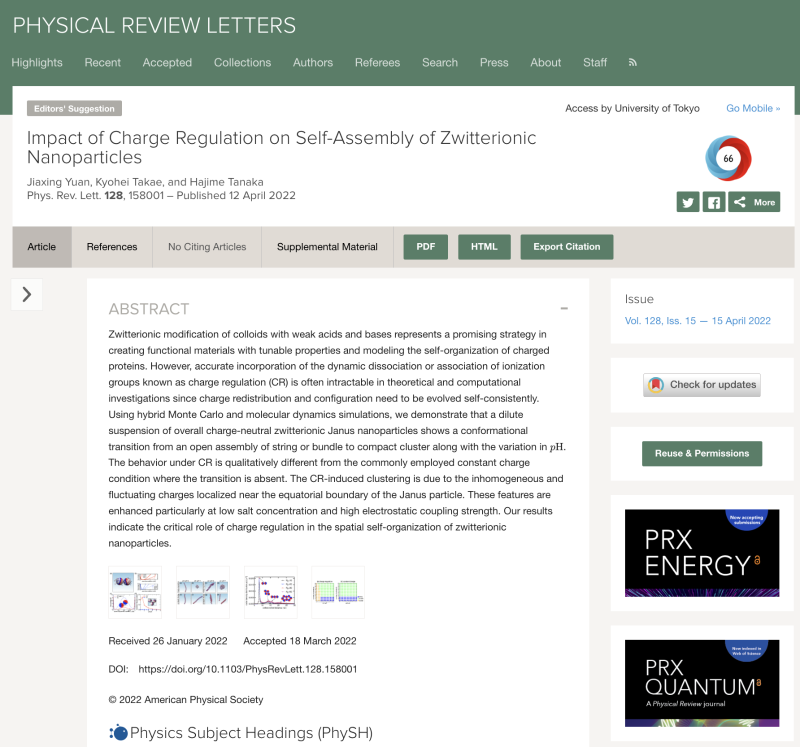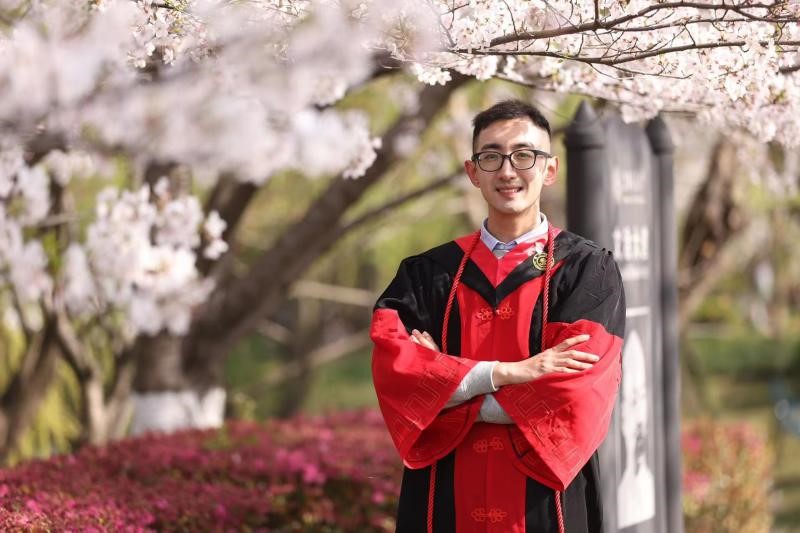Recently, researchers from Research Center for Advanced Science and Technology at The University of Tokyo used a new computer simulation to model the electrostatic self-organization of zwitterionic nanoparticles. They incorporated the dissociation state of the surface groups of charged colloidal particles into the simulation according to the particle's surroundings and changed the dissociation or association structures of the nanoparticles by controlling the pH. The study result has implications for the design of pH-responsive smart materials and for understanding biological issues such as the self-assembly of charged proteins. The article "Impact of charge regulation on self-assembly of zwitterionic nanoparticles" was published on 12 April, 2022 in Physical Review Letter, a leading Journal of Physics. The article was selected in PRL Editor's suggestion (one in seven was recommended by editor).

"Self-assembly of nanoparticles has been a hot topic in physics, chemistry, materials and other disciplines. The significance of this study result lies in the discovery of particle association based on charge fluctuation, and the study will help experimentalists to create functional materials with tunable properties using zwitterionic nanoparticles in the future," first author Yuan Jiaxing says. Yuan Jiaxing is a Zhiyuan V (Class of 2016) Physics graduate and he is currently a postdoctoral researcher at Research Center for Advanced Science and Technology, The University of Tokyo.

Author: Lin Yijie
Source: Zhiyuan College, SJTU
Translated by Zhang Yue

